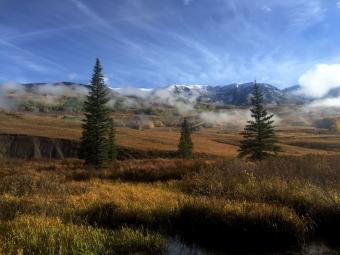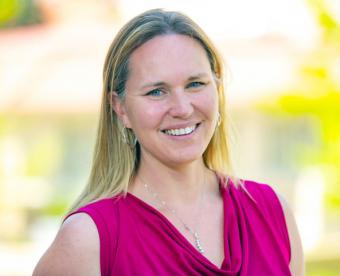NSF Research Coordination Network aims to expand use, application of state-of-the-art geoscience models
“The goal is to develop a bigger community of people who use reactive transport modeling as part of their science,” Associate Professor Alexis Navarre-Sitchler said.

Reactive transport models help to explore infiltration of melting snow and rain into the subsurface, the weathering of rocks and chemistry of rivers and streams. A better understanding of these processes allows for better predictions of water resources with changing climate and land use.
In order to understand the complex processes that control the movement of contaminants and shape the Earth’s surface, scientists increasingly rely on reactive transport models, complex numerical models that incorporate the latest mathematical techniques to visualize the movement of water and the attendant geochemical and microbial reactions.
“If we have wide-scale changes in a watershed, like climate change or pine beetles coming through and killing all the pine trees, for example, how does that change water chemistry? Can we predict that?” said Alexis Navarre-Sitchler, associate professor of geology and geological engineering at Colorado School of Mines. “On questions like these, reactive transport models are really powerful, because we can’t do enough experiments that allow us to figure this out on a watershed scale.”
But a disconnect exists between the development of these advanced reactive transport simulation capabilities, which has primarily occurred at national laboratories, and the training available to scientists in university research groups who could benefit from and expand their use and application.

Navarre-Sitchler and colleagues from Stanford University, University of Illinois and Lawrence Berkeley National Laboratory are now working to bridge that gap by developing an open-loop educational platform that not only teaches geoscientists how to run these advanced models but also how to conceptualize systems and research questions in a way that would benefit from and translate to modeling.
“The goal is to develop a bigger community of people who use reactive transport modeling as part of their science,” Navarre-Sitchler said. “A watershed is super complex. You can’t capture every complexity in a model so you have to simplify. Knowing how to simplify and collect the data you need to use a model in a useful way really involves some training and some evolution in the way you think.”
Funding for the five-year project comes from the National Science Foundation's Research Coordination Network program. Also collaborating on the project are Katherine Maher, associate professor of earth system science at Stanford University; Jennifer Druhan, assistant professor of geology at the University of Illinois; and Hang Deng, research scientist at Lawrence Berkeley National Lab.
At the heart of the training platform will be a two-week summer institute, to be held on the Mines campus starting in 2021. Attendance will be free, thanks to the NSF support, and researchers will be able to participate in whatever portions are relevant to them, whether that’s just three days or the whole two weeks.
“The open-loop learning model is designed to allow scientists to participate as both students and educators. For example, someone might teach an introductory module one day and then take a course on the latest in high-performance computing the next.” Maher said.
What makes reactive transport models so unique — and so powerful — is their interdisciplinary nature, Navarre-Sitcher said.
“You can model fluid transport, geochemistry, gas diffusion and microbes all in one model, instead of having to use different models and try to compare them,” she said. “Fifteen years ago, these models didn’t exist because we didn’t have the computational power or the framework we needed to couple all these processes together.”
Another goal of the project is to create a formalized network among the modeling community, where members can find curriculum materials for their own modeling courses, share announcements, post papers and more.




